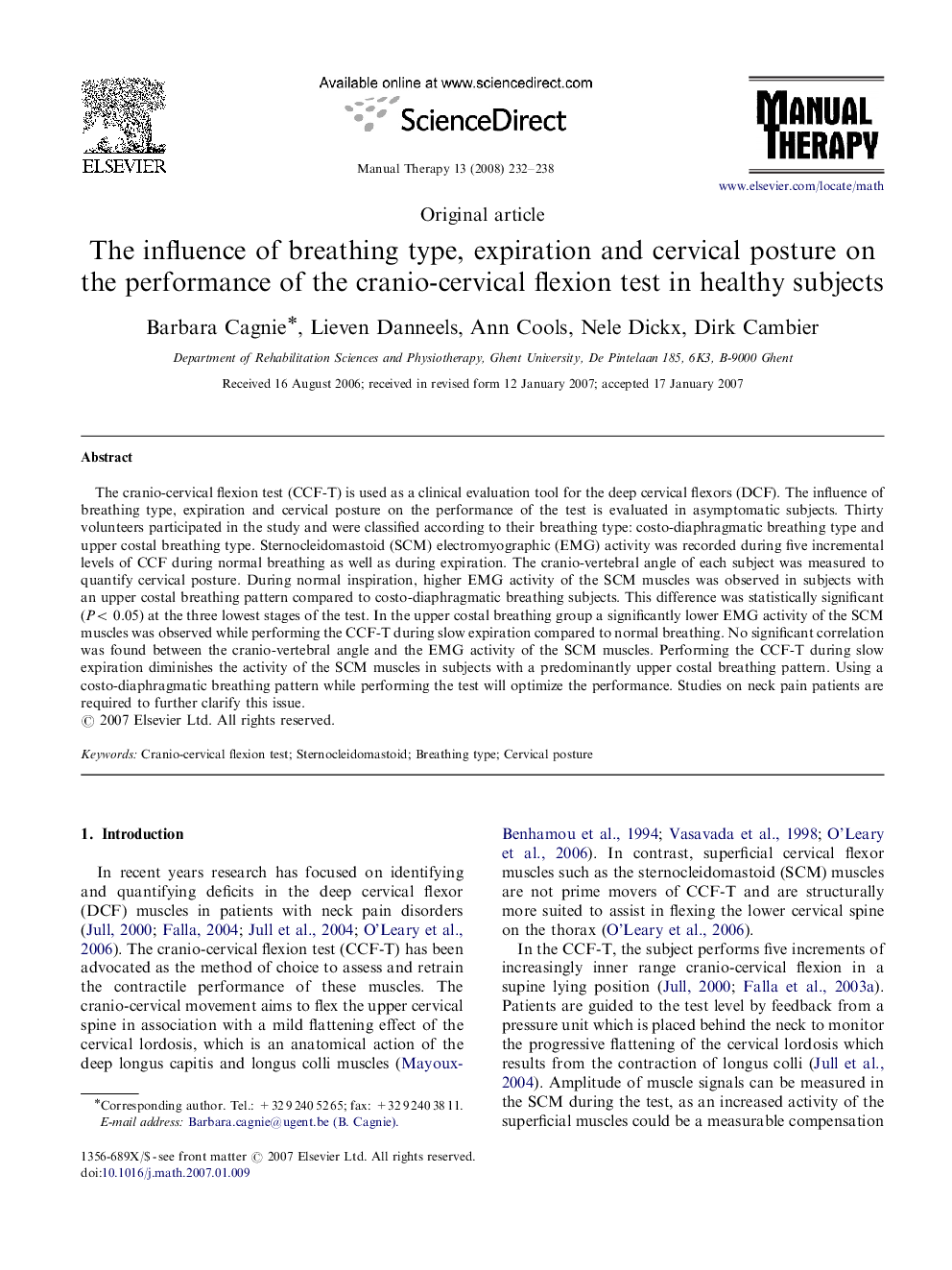| Article ID | Journal | Published Year | Pages | File Type |
|---|---|---|---|---|
| 2625727 | Manual Therapy | 2008 | 7 Pages |
The cranio-cervical flexion test (CCF-T) is used as a clinical evaluation tool for the deep cervical flexors (DCF). The influence of breathing type, expiration and cervical posture on the performance of the test is evaluated in asymptomatic subjects. Thirty volunteers participated in the study and were classified according to their breathing type: costo-diaphragmatic breathing type and upper costal breathing type. Sternocleidomastoid (SCM) electromyographic (EMG) activity was recorded during five incremental levels of CCF during normal breathing as well as during expiration. The cranio-vertebral angle of each subject was measured to quantify cervical posture. During normal inspiration, higher EMG activity of the SCM muscles was observed in subjects with an upper costal breathing pattern compared to costo-diaphragmatic breathing subjects. This difference was statistically significant (P< 0.05) at the three lowest stages of the test. In the upper costal breathing group a significantly lower EMG activity of the SCM muscles was observed while performing the CCF-T during slow expiration compared to normal breathing. No significant correlation was found between the cranio-vertebral angle and the EMG activity of the SCM muscles. Performing the CCF-T during slow expiration diminishes the activity of the SCM muscles in subjects with a predominantly upper costal breathing pattern. Using a costo-diaphragmatic breathing pattern while performing the test will optimize the performance. Studies on neck pain patients are required to further clarify this issue.
